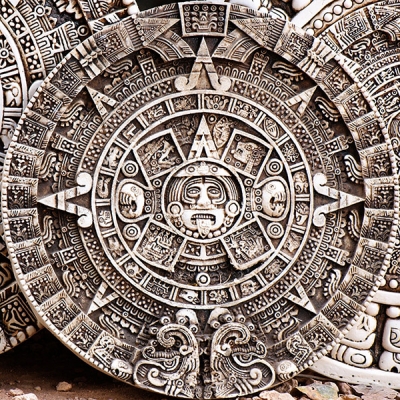 Dog was the first animal to be domesticated by humans 15,000 years. Humans fed the dog’s wolf ancestors and in return they protected them from dangerous animals. Over a period of time these animals were domesticated and became good companions. About 10,000 years ago humans started domesticating other wild animals too—sheep and goat in the Middle East; cow, pig, horse, and poultry in Europe; and lama and turkey in America. The domesticated animals provided meat, milk, skin, and wool.
Dog was the first animal to be domesticated by humans 15,000 years. Humans fed the dog’s wolf ancestors and in return they protected them from dangerous animals. Over a period of time these animals were domesticated and became good companions. About 10,000 years ago humans started domesticating other wild animals too—sheep and goat in the Middle East; cow, pig, horse, and poultry in Europe; and lama and turkey in America. The domesticated animals provided meat, milk, skin, and wool.

 They collected plants, honey, and bird’s eggs, or went for hunting. They drove away the smaller animals living in pits with the help of fires and torches. Neanderthals even hunted for large animals. They made groups of ten or more and killed mammoths, rhinos, or bison from the nearest point with spears. The parts of the animals, which they did not eat, were utilized in other ways. Nothing went unused. Weapons, tools, and jewellery were made from bones, tendons became ropes, and skin and hide were used to make clothes and tents. Even today there are races that live as hunters and collectors, such as the Bushmen, also known as San, in Namibia and Botswana in southern Africa.
They collected plants, honey, and bird’s eggs, or went for hunting. They drove away the smaller animals living in pits with the help of fires and torches. Neanderthals even hunted for large animals. They made groups of ten or more and killed mammoths, rhinos, or bison from the nearest point with spears. The parts of the animals, which they did not eat, were utilized in other ways. Nothing went unused. Weapons, tools, and jewellery were made from bones, tendons became ropes, and skin and hide were used to make clothes and tents. Even today there are races that live as hunters and collectors, such as the Bushmen, also known as San, in Namibia and Botswana in southern Africa.  Fires in the steppes or bushes scared humans earlier. Gradually, they learnt to appreciate the power of fire. It gave them light and warmth and kept away wild animals. They could harden the tips of wooden spears and cook meat in it. About 700,000 years ago, humans started to protect themselves from a fire started accidentally by lightning. Soon they learnt to produce fire, by striking Flintstone and pyrite with each other or by rubbing lumbers. The spark was used to ignite tinder fungus, a kind of mushroom. The discovery of fire is one of the most important achievements of humans. Without it we could not have developed to the stage where we are today.
Fires in the steppes or bushes scared humans earlier. Gradually, they learnt to appreciate the power of fire. It gave them light and warmth and kept away wild animals. They could harden the tips of wooden spears and cook meat in it. About 700,000 years ago, humans started to protect themselves from a fire started accidentally by lightning. Soon they learnt to produce fire, by striking Flintstone and pyrite with each other or by rubbing lumbers. The spark was used to ignite tinder fungus, a kind of mushroom. The discovery of fire is one of the most important achievements of humans. Without it we could not have developed to the stage where we are today.  The Homo Habilis or the ‘skilful’ humans developed about 2.5 million years ago. They produced stone tools, lived in small groups, and moved from one place to another like nomads, when food became scarce. After mastering the fire, humans wandered to the cooler Europe and Asia. Humans learnt to cultivate the land and keep the cattle and pets. The Stone Age ended when humans learnt to obtain metals from the ores.
The Homo Habilis or the ‘skilful’ humans developed about 2.5 million years ago. They produced stone tools, lived in small groups, and moved from one place to another like nomads, when food became scarce. After mastering the fire, humans wandered to the cooler Europe and Asia. Humans learnt to cultivate the land and keep the cattle and pets. The Stone Age ended when humans learnt to obtain metals from the ores. Our universe was born with the Big Bang and with it time was also born. No one can explain exactly what it is. Albert Einstein, the famous physicist, tried it once and said that time is a ‘measure to arrange things one after the other’. We have defined equal sections from the second to the year to understand when an event occurred in the past. For 5000 years, people have been trying to invent all possible instruments for measuring time such as sundials, water clocks, and pendulum clocks. Since 1949 we have the precise atomic clock, which becomes slow by one second in 30 billion years.
Our universe was born with the Big Bang and with it time was also born. No one can explain exactly what it is. Albert Einstein, the famous physicist, tried it once and said that time is a ‘measure to arrange things one after the other’. We have defined equal sections from the second to the year to understand when an event occurred in the past. For 5000 years, people have been trying to invent all possible instruments for measuring time such as sundials, water clocks, and pendulum clocks. Since 1949 we have the precise atomic clock, which becomes slow by one second in 30 billion years. 
